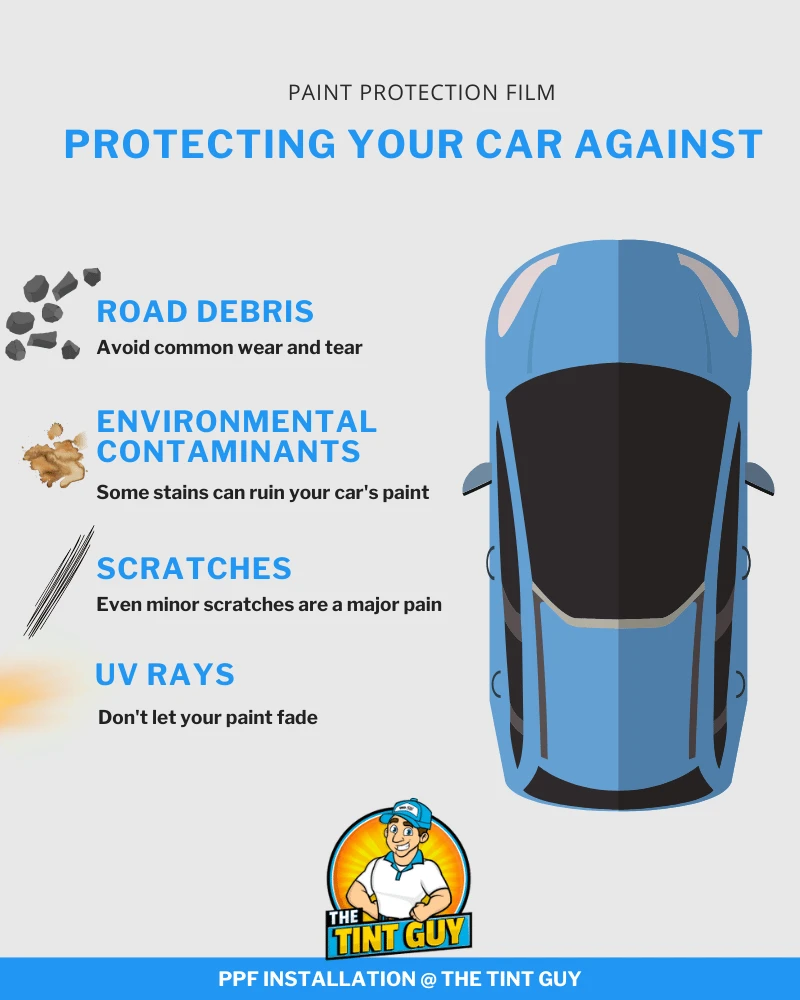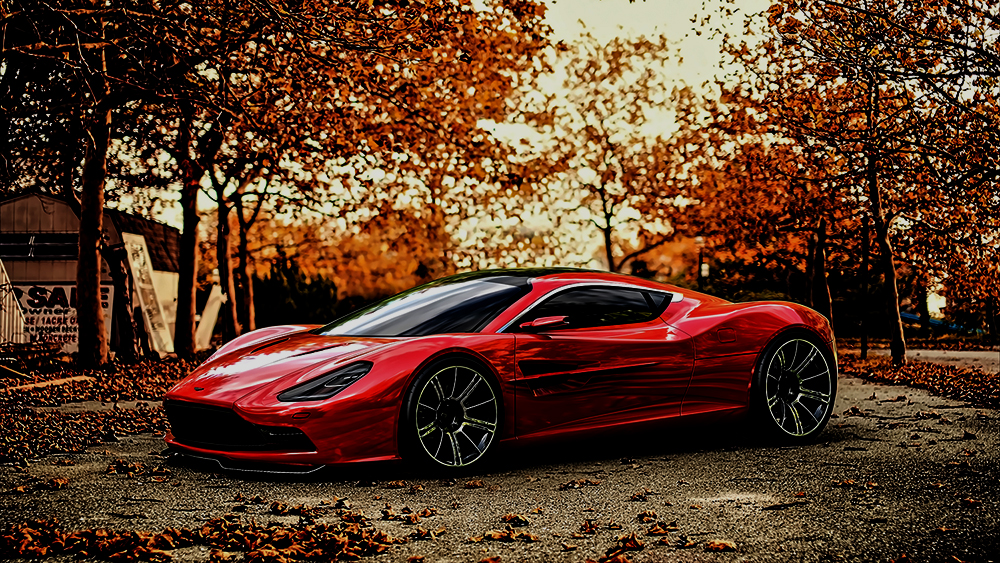As the leaves change color and the air turns crisp, your car faces new challenges that can damage its paint. You might not realize it, but falling leaves, moisture, and fluctuating temperatures can slowly wear down your car’s finish.
If you want to keep your vehicle looking shiny and fresh, you need to take steps now. You’ll discover simple and effective ways to protect your car paint throughout the fall season. Keep reading to learn how to shield your car from common fall hazards and maintain that showroom shine all year long.
Fall Paint Risks
Fall brings unique challenges for your car’s paint. The season’s elements can harm the finish. Understanding these risks helps you protect your vehicle better.
Leaves, moisture, and changing temperatures all affect your car’s paint. Small problems can turn into big damage if ignored.
Leaf Debris And Sap
Fallen leaves stick to your car’s surface. They trap dirt and moisture underneath. Tree sap also falls and lands on the paint. Sap is sticky and acidic. It can eat into the paint if not cleaned quickly. Leaving leaves and sap on your car can cause stains and scratches.
Moisture And Humidity
Fall often means more rain and dew. Moisture stays on the car longer due to cooler temperatures. This wetness can cause water spots and rust. High humidity encourages mold and mildew growth. Both harm the paint and metal underneath.
Temperature Fluctuations
Fall days can be warm while nights are cold. These temperature changes stress the paint. The paint expands and contracts, which may cause cracks. Cold mornings with frost can worsen these effects. Cracked paint leaves the metal exposed to damage.
Credit: carcapsule.com
Regular Washing
Regular washing is key to protect your car’s paint during fall. Dirt, leaves, and tree sap can damage the surface. Washing removes these harmful elements and keeps the paint fresh. It also helps avoid stains and rust spots caused by moisture and debris.
Choosing The Right Soap
Use a soap made for cars, not household cleaners. Car soaps are gentle and do not strip the wax. They help maintain the paint’s shine and protect the surface. Avoid harsh detergents that can damage the paint or clear coat.
Frequency And Technique
Wash your car at least once a week in fall. More often if your car gets very dirty. Use a soft sponge or microfiber cloth. Clean gently in straight lines to avoid scratches. Rinse well to remove all soap and dirt.
Drying Methods
Dry the car right after washing to stop water spots. Use a clean, soft towel or microfiber cloth. Pat dry instead of rubbing to protect the paint. Avoid air drying as it leaves marks and streaks.
Wax And Sealants
Wax and sealants create a protective layer on your car’s paint. This layer shields the surface from dirt, moisture, and harsh fall elements. Using them regularly keeps your car looking fresh and shiny throughout the season.
Benefits Of Waxing
Waxing adds a glossy shine to your car’s paint. It repels water, helping to prevent water spots and stains. Wax also protects against dirt and dust build-up. The wax layer reduces damage from UV rays, which can fade paint. It is an easy way to keep your car clean longer.
Types Of Sealants
Sealants are synthetic coatings that last longer than wax. They provide strong protection against weather and pollutants. Some sealants are spray-on, while others come in paste or liquid form. Choose a sealant made for your car’s paint type. Sealants keep the surface smooth and easier to clean.
Application Tips
Start with a clean, dry car before applying wax or sealant. Use a soft cloth or applicator pad for even coverage. Apply thin layers and follow the product instructions carefully. Allow the wax or sealant to dry to a haze before buffing. Buff gently with a clean microfiber towel for best results. Repeat this process every few months for ongoing protection.

Credit: thetintguy.com
Protective Covers
Protective covers are essential for keeping car paint safe during fall. Leaves, dirt, and moisture can damage the paint. Covers act as a shield against these elements. They also prevent scratches from falling branches or debris. Using the right cover helps maintain the car’s shine and value.
Selecting Quality Covers
Choose covers made of soft, breathable material. This stops moisture buildup that can cause rust. Look for covers with a smooth inner lining to avoid scratching the paint. Ensure the cover fits snugly to prevent wind from blowing it off. Waterproof covers work best for heavy rain and dew.
Proper Usage
Clean your car before covering it. Dirt and dust trapped under the cover can scratch the paint. Place the cover gently over the car, starting from the front. Secure the cover at the bottom to keep it in place. Avoid using covers on wet cars to stop mold and mildew growth.
Storage Tips
Store covers in a dry, cool place when not in use. Fold them neatly to avoid creases that could damage the fabric. Keep covers away from sharp objects to prevent tears. Regularly wash covers following the manufacturer’s instructions. Clean covers last longer and protect better.
Parking Strategies
Parking your car smartly helps protect its paint during fall. The right spot reduces damage from leaves, sap, and moisture. It also keeps dirt and debris off the surface. This section covers simple parking tips that keep your car looking fresh.
Avoiding Tree Cover
Parking under trees may seem cool but it hurts your car’s paint. Falling leaves and sap can stick and stain the surface. Birds often perch on branches, leaving droppings that damage paint. Choose open areas without tree cover to avoid these problems.
Using Garage Space
A garage offers the best protection for your car paint. It shields your vehicle from rain, dust, and falling leaves. If you have garage space, use it every day during fall. This keeps the paint clean and reduces the need for frequent washing.
Safe Outdoor Spots
Sometimes, parking inside is not an option. Look for dry, paved areas away from trees and bushes. Avoid spots near construction or dusty roads. These places keep dirt and debris off your car and help maintain its paint quality.
Quick Spot Treatments
Quick spot treatments save your car paint from fall damage fast. The season brings many challenges like sap, bird droppings, and mud. These spots can harm your paint if not cleaned right away. Acting quickly keeps your car looking fresh and shiny. Here are simple ways to treat these common fall stains.
Removing Sap And Stains
Tree sap is sticky and hard to remove. Dab a soft cloth with rubbing alcohol. Gently rub the sap until it loosens. Avoid scrubbing hard to protect the paint. Wash the area with soap and water after. This stops sap from causing permanent marks.
Handling Bird Droppings
Bird droppings are acidic and can burn paint. Clean them as soon as you see them. Use a wet cloth to soften the droppings. Wipe gently without scratching the surface. Rinse with clean water and dry with a microfiber towel. Quick cleaning keeps the paint safe.
Dealing With Mud And Dirt
Mud and dirt can scratch paint when dry. Spray the area with water to loosen dirt. Use a soft sponge and car wash soap to clean. Rinse well and dry the car to avoid water spots. Regular washing stops dirt from building up.

Credit: www.silco.si
Frequently Asked Questions
How Can I Protect Car Paint From Fall Leaves?
To protect your car paint from fall leaves, wash your car regularly. Leaves can trap moisture and dirt, causing stains and damage. Use a quality car wax to create a protective barrier. Avoid parking under trees to minimize leaf accumulation on your car.
What Is The Best Car Wax For Fall Protection?
A high-quality, durable car wax with hydrophobic properties is best for fall. It repels water, dirt, and sap. Synthetic waxes often last longer than natural ones. Regular waxing helps maintain your car’s shine and protects the paint from seasonal elements like rain and fallen debris.
How Often Should I Wash My Car In Fall?
Washing your car every one to two weeks in fall is ideal. Frequent washes remove dirt, sap, and road grime that can damage paint. Use a pH-balanced car shampoo and avoid harsh detergents. Regular cleaning prevents buildup and keeps your paint looking fresh.
Can Bird Droppings Damage Car Paint In Fall?
Yes, bird droppings can severely damage car paint at any time. They contain acidic compounds that eat into the paint quickly. Clean droppings immediately with a soft cloth and mild cleaner. Prompt removal prevents permanent stains and paint corrosion during the fall season.
Conclusion
Protecting your car paint during fall keeps it shiny and strong. Clean your car often to remove dirt and leaves. Use a good wax to shield the paint from rain and sun. Park in covered or shaded areas whenever possible.
Small scratches can lead to bigger problems if ignored. Taking these simple steps saves money on repairs later. A little care goes a long way for your car’s look. Keep your vehicle ready for winter by protecting its paint now.
Your car will thank you with a fresh, clean finish all season.
Disclosure: As an Amazon Associate, I may earn from qualifying purchases at no extra cost to you. Amazon and the Amazon logo are trademarks of Amazon.com, Inc, or its affiliates.

I am Sadman, the founder of CarSensorHub.com, where I share my passion for cars and technology. I specialize in writing detailed reviews and helpful guides on car gadgets, accessories, safety tools and many more. My mission is to help car owners discover the best products and tips to improve their driving experience and stay safe on the road.


